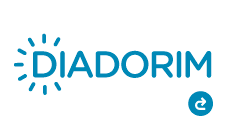Fantasias coloridas de destruição
Keywords:
Cinema, Nazism, HolocaustAbstract
The production of the film in color in the ‘Third Reich’ has obtained through chemical processes developed by the technicians of the IG-Farben, the same industry that provided the Zyklon B gas for the death camps. The improvement of color in the German cinema and the extermination of the Jews in gas chambers ran in parallel, in continuous improvements within a totalitarian system, in which culture and barbarism became inseparable. The Alliance between art and crime could not fail to reflect on his own imaginary produced. Anti-Semitic since the biological underpinnings of their mode of production, the Nazi film has created revealing fantasies of destruction.
References
ABBOT, John. Kolberg. The Apotheosis of Nazi Cinema. Encarte do DVD Kolberg.Chicago: Interntional Historic Films, 2004.
ALT, Dirk. “Der Farbfilm marchiert”! Frühe Farbfilmverfahren und N.S. Propaganda 1933-1945. München: Belleville, 2011.
BARKHAUSEN, Hans. Filmpropaganda für Deutschland im Ersten und Zweiten Weltkrieg. Hildesheim: Olms Presse, 1982.
CADARS, Pierre; COURTADE, Francis. Histoire du cinéma nazi. Prefácio de Raymond Borde. Paris: Le Terrain Vague, 1972.
COMITÊ INTERALIADO DO BRASIL. A verdade sobre as atrocidades do Eixo, 1945.
DE-NUR, Yehiel. Planet Auschwitz. Disponível em: https://www.youtube.com/watch?v=o0T9tZiKYl44>. Acesso em 18/05/2015.
ESPAÑA, Rafael de. El cine de Goebbels. Barcelona: Editorial Ariel, 2000.
FRAENKEL, Heinrich; MANVELL, Roger. Doutor Goebbels. Vida e morte. São Paulo: Madras Editora, 2012.
GOEBBELS, Joseph. Diário. 1942-1943. Rio de Janeiro: Editora A Noite, s/d.
GOEBBELS, Joseph. Tagebücher. Band 4: 1940-1942. Herausgegeben von Ralph George Reuth. München: Serie Piper, 1992.
GRAF, Dominik. Opfergag. Carte Blanche. Deutsches Filminstitut. Disponível em: http://deutsches-filminstitut.de/blog/carte-blanche-dominik-graf. Acesso em 16/08/2016.
GREGOR, Ulrich; PATALAS, Enno. Geschichte des modernen Films. Güttersloh: Bertelsmann, s/d.
HARLAN, Veit. “Farbfilm”, in KOSHOFER, Gert. Color. Die Farben des Films. Berlin: Spiess, 1988.
HARLAN, Veit. Souvenirs, ou le cinéma allemand selon Goebbels. Paris: Éditions FranceEmpire, 1974.
HILBERG, Raul. A destruição dos judeus europeus, 2 vols. Barueri: Amarilys, 2016.
HITLER, Adolf. Hitler Speech in Sportpalais, Berlin, January 30, 1942. Neues Europa. Disponível em: http://www.der-fuehrer.org/reden/english/42-01-30.htm. Acesso em 16/06/2016.
HULL, David Stewart. Film in the Third Reich. A Study of the German Cinema 1933-1945. Berkeley: University of California Press, 1969.
KLATT, Oliver. Hitlers Disney. Der Spiegel, 25.04.2013. Disponível em: http://www.spiegel. de/einestages/hans-fischerkoesen-der-walt-disney-deutschlands-a-951106.html. Acesso em 16/08/2016.
LACQUEUR, Walter. O terrível segredo. A verdade sobre a manipulação de informações na “Solução Final” de Hitler. Rio de Janeiro: Zahar Editores, 1981.
LACQUEUR, Walter; BREITMAN, Richard. O herói solitário [Breaking the silence]. São Paulo: Best Seller, 1987.
MARCORELLES, Louis. The Nazi Cinema. Sight and Sound, v. 25, n. 4, London, outono 1955.
MAREK, Michael. 1943: Estréia do “Barão de Münchhausen”. Calendário Histórico. Deutsche Welle. Em: http://www.dw-world.de/dw/article/0,2144,780978,00.html. Acesso em 16/08/2016.
OVEN, Wilfred. Quién era Goebbels? Uma biografia de cerca. Buenos Aires: Editorial Revision, 1988.
VIDAL-NAQUET, Pierre. Os assassinos da memória. “Um Eichmann de papel” e outros ensaios sobre o revisionismo. Tradução de Marina Appenzeller. Campinas, SP: Papirus, 1988.
VIRILIO, Paul. Guerre et cinéma I. Logistique de la percéption. Paris: Cahiers du Cinéma, 1984.
WEGENAST, Ulrich (org.). DVD Animation in der Nazizeit. Coleção Geschichte des Deutschen Animationsfilms. Der Filmverlag der Spezialisten: Berlin, 2011.
Downloads
Additional Files
- Die goldene Stadt (Praga, a cidade da ilusão, 1942). (Português (Brasil))
- Frauen sind doch bessere Diplomaten (As mulheres são mesmo melhores diplomatas, 1941). (Português (Brasil))
- Opfergang (Sacrifício, 1944). (Português (Brasil))
- Immensee (Immensee. 1943). (Português (Brasil))
- Sem título (Português (Brasil))
- Das Dumme Gänslein (O gansinho burro, 1944). (Português (Brasil))
- Kolberg (Kolberg, 1945). (Português (Brasil))
- Wiener Mädeln (Senhorita de Viena, 1944). (Português (Brasil))
- FANTASIAS COLORIDAS DE DESTRUIÇÃO - VERSÃO FINAL (Português (Brasil))
- Prisioneiros de Dora-Mittelbau na fábrica de foguetes V-2 no complexo Mittelwerk em 1944 (Português (Brasil))
- Reclassificados como “clássicos do cinema alemão” pelo revisionismo de consumo, os filmes nazistas são restaurados, relançados em mostras e retrospectivas, exibidos na TV e vendidos no mercado de vídeo. (Português (Brasil))
- Cartaz original do filme Münchhausen (As aventuras do Barão de Münchhausen, 1943). (Português (Brasil))
Published
How to Cite
Issue
Section
License
Authors who publish in this journal agree to the following terms:
- Authors retain copyright and grant the journal the right of first publication, with the work simultaneously licensed under the a Creative Commons Attribution-NonCommercial 4.0 International License that permits sharing of the work with acknowledgement of authorship and initial publication in this journal;
- Authors are permitted to enter into additional contracts separately, for non-exclusive distribution of the version of the work published in this journal (e.g., the Creative Commons Attribution License).
- Authors are permitted and encouraged to publish and distribute their work online (e.g., in institutional repositories or on their home page) at any point before or during the editorial process, as this may generate productive changes as well as increase the impact and citation of the published work.
- It is the responsibility of the authors to obtain written permission to use in their articles materials protected by copyright law. Revista PÓS is not responsible for copyright breaches made by its contributors.












